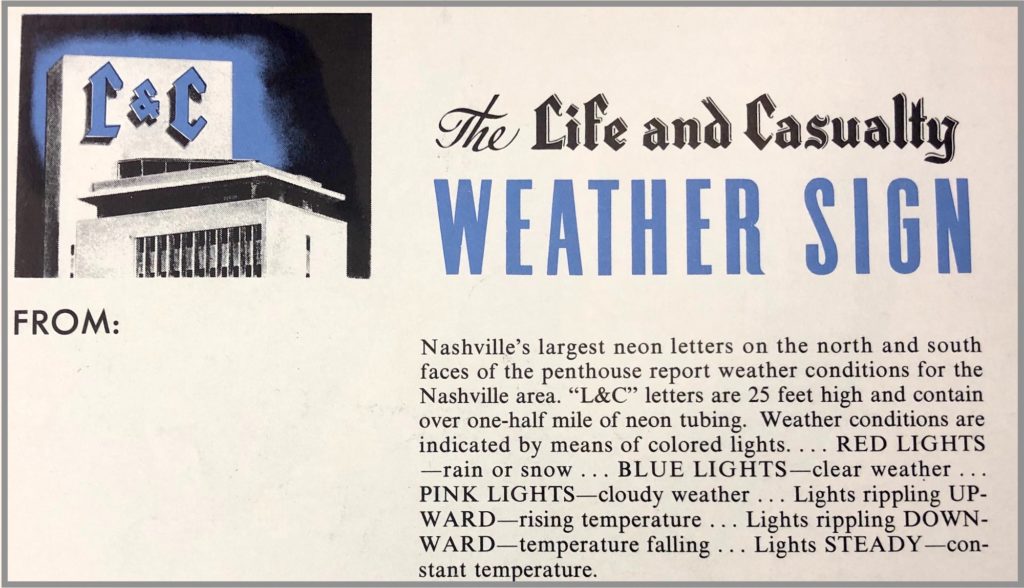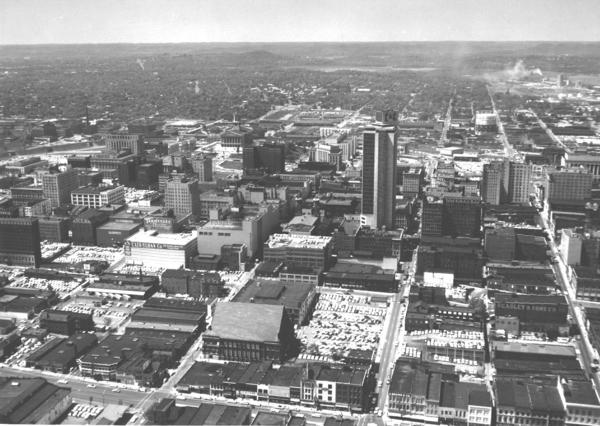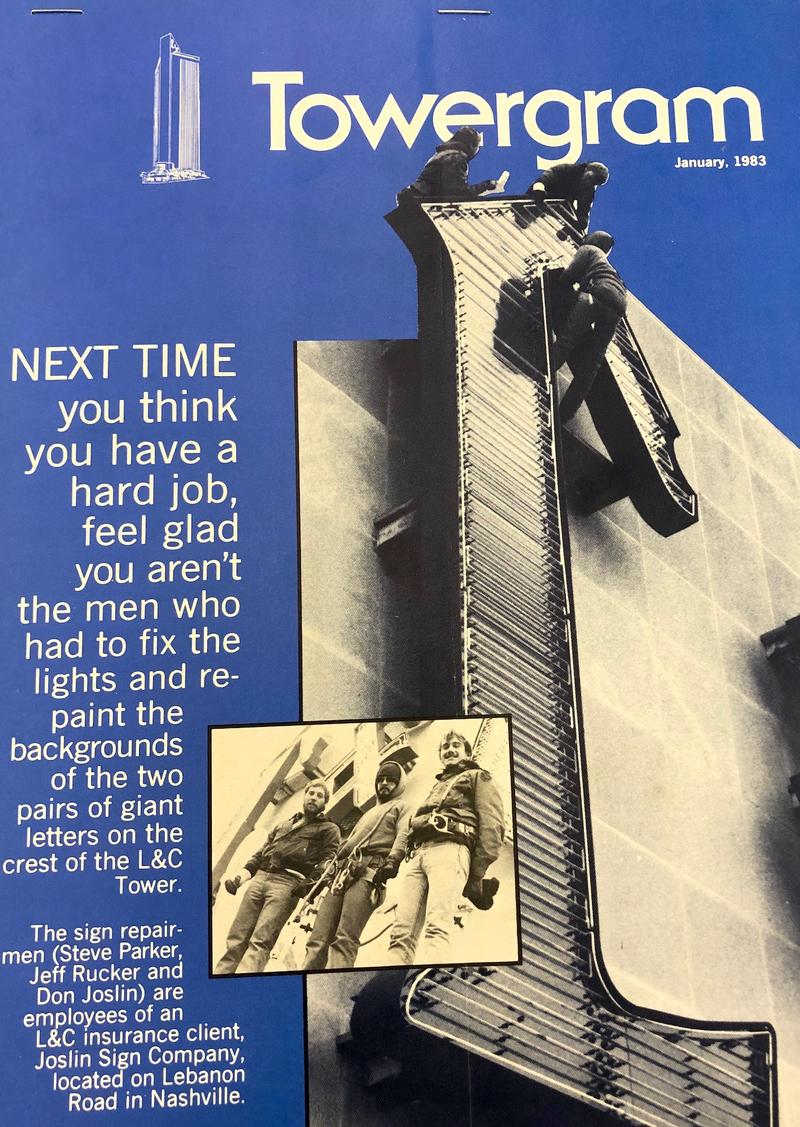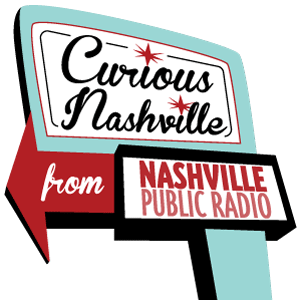
During the 1950s, checking the weather wasn’t as easy as it is today. But Nashville residents had one unusual option: to look at the city skyline.
That’s because the sign on the Life & Casualty tower once served as a weather beacon. A Curious Nashville listener reached out to ask:
“Why doesn’t the top of the L&C Tower downtown light up blue and pink anymore for the weather conditions?”
When looking at the buildings that make up downtown, the L&C tower stands out. The stone color of the building, the slits between the columns of windows and the massive letters on top — in an ornate, classical style — all draw the eye in. It seems like something from another era of Nashville’s history.
And it is.
Completed in 1957, it was by far the tallest building in town, and in the Southeast. (See a vintage postcard celebrating the tower.)
“Imagine that there’s nothing more than about 10 stories tall and then this one tower rises up,” says Tim Cummings, whose
father built the letters that still glow on the iconic tower.
He spoke about the old neon with pride as he looked up from the pedestrian bridge one recent afternoon.
His family has several deep ties to the city, as his grandfather was mayor from 1938 to 1951. He speaks passionately about the place and says he plans to never leave.
But Tim Cummings was just a baby when his father installed the 25-foot letters above the building’s 30th floor.

Looking To The Lights
According to a pamphlet in the Metro Archives, the L&C letters contained over a half-mile of neon tubing and could change between three colors.

In a Facebook post from the Metro Archives about the weather beacon, those with memories of the old sign chimed in on their experiences with the letters. Some commented on how the sign represents the changing times for the city and others offered ideas for why the weather beacon stopped operating.
Here’s how it worked: Red lights meant rain or snow were on the way, blue meant clear weather, and pink was for cloudy skies.
The lights would also ripple upward for rising temperatures and downward when temperatures were falling. The pamphlet explaining this process is stored in the Metro Archives. It’s included in a guide to the tower’s observation deck, which is now closed to the public.
The sign was controlled from the meteorology department at a nearby airfield. It was reset every four hours.
“Whenever the update to the weather report came in, the meteorologists could go over and flip the switches, (and) change the appearance of the sign in downtown,” Cummings said.
End Of An Era
Cummings actually worked on the sign once when he was 17 years old. Precarious catwalks were positioned beneath the signs on both sides of the building. One was above the observation deck, and the other hung over the street 40 stories below.
“So if you stepped back to admire your work on that side you’re really in a lot of trouble,” he said.
Cummings believes the sign went from being a weather beacon to the standard red it is today during the early 1980s.
“They got just tired of the maintenance costs and the things. Plus, if you think about in ’57, knowing the weather was a big thing. I mean, now we have 24/7 news, you have The Weather Channel, and everybody’s got an iPhone,” he said.
In other words, people just didn’t need it.
But, Cummings still dreams that someday he will again be able to look at the Nashville skyline for his weather report. Just for nostalgia’s sake.
_


